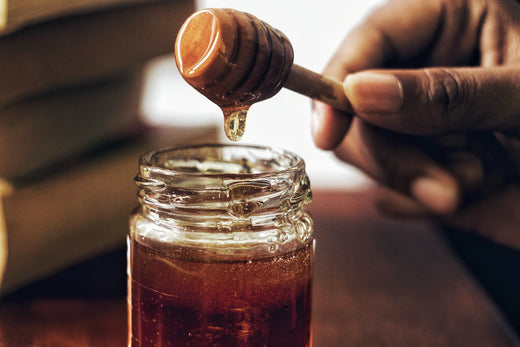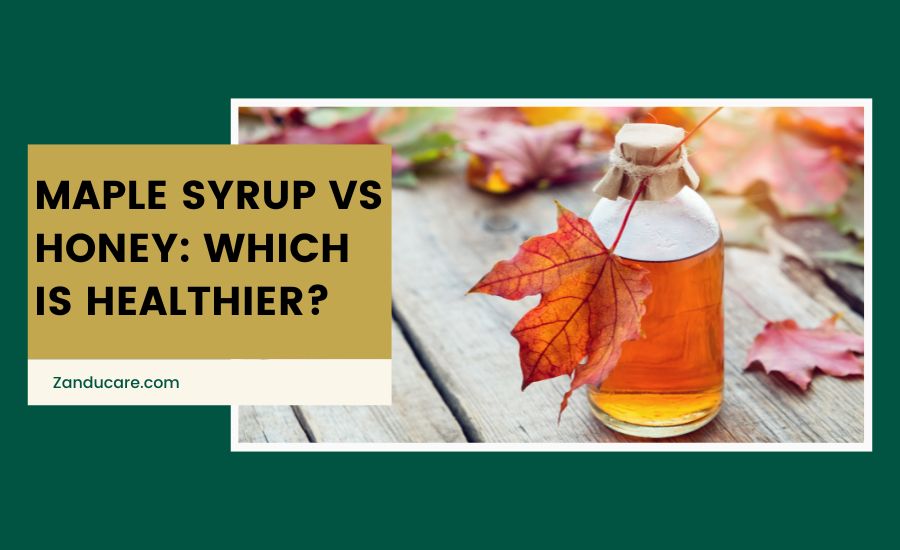Describing honey as both a natural sweetener and a flavour enhancer, it's readily accessible in the market. It is also one of the best nutritious options. Its significance extends beyond mere sweetness, with a rich history and renowned medicinal properties, earning it the title of nature's versatile remedy. The unique taste and consistency of this golden elixir make it a standout ingredient in a wide array of recipes.
Until now, you may have encountered only a couple of varieties, with variations in texture and colour stemming from processing techniques and therapeutic applications. However, the source of the nectar plays a crucial role in determining the texture and flavour profile of honey.
Presently, there are over 300 different types of honey available in the market, each offering distinct health benefits. This guide aims to acquaint you with various kinds of honey, helping you discern which one might be the most suitable for your needs.
List of 12 Types of Honey in India
Honey's texture can vary, falling into categories such as liquid, granulated, creamed, chunked, or in its unprocessed state known as comb honey. Furthermore, honey can be classified based on its processing level into two main types: raw and pasteurised.
Raw honey is the unprocessed variety extracted directly from the comb without undergoing any refinement. It boasts the highest therapeutic value. In contrast, you get pasteurised honey through a heating and straining process aimed at eliminating any bacterial or fungal contamination.
Here you will find the names honey exclusively produced in India:
1. Manuka Honey

Source: Image by airborne.co.nz
Manuka honey is the product of bees that forage on the blossoms of the Manuka bush, scientifically known as Leptospermum scoparium. It is different because of its elevated levels of methylglyoxal (MGO) and dihydroxyacetone. They contribute to its antibacterial properties.
When applied to wounds, Manuka honey can stimulate the generation of new blood cells. Furthermore, it can encourage the proliferation of fibroblast and epithelial cells, indicating its potential for wound healing (vulnerary) activity.
This honey is also abundant in essential vitamins such as B1, B2, B3, B5, and B6, along with amino acids like lysine, proline, arginine, and tyrosine. Additionally, it contains a range of minerals, including calcium, magnesium, copper, potassium, zinc, and sodium.
2. Monofloral Honey
Monofloral honey, often referred to as "unifloral honey," is the result of bees primarily collecting nectar from a single type of plant. These industrious bees gather nectar from one specific plant source and then produce honey exclusively from it. Typically, any honey that contains more than 45% of its nectar sourced from a single plant variety is monofloral honey.
This type of honey is notable for its mineral content, a select range of vitamins, and the presence of polyphenols. Unifloral honey inherits the unique nutritional qualities of the plant species it originates from, rendering it a more nutritious option.
Moreover, unifloral honey carries the distinct flavour profile of the plant or flower it comes from. This makes it a popular choice in baking and various recipes due to its exceptional and characteristic flavours.
3. Multifloral Honey
Multifloral honey, as the name implies, is a honey produced from a mixture of various nectars. Bees engaged in foraging gather nectar and sap from diverse plants and flowers, using this assortment to create honey.
In multifloral honey, the pollen content from various plants typically constitutes less than 45% of the total pollen content. This results in a blended and non-distinct flavour profile.
The colour of multifloral honey varies, often appearing in shades of either dark or light. It tends to be more cost-effective compared to monofloral honey and is readily accessible. Multifloral honey incorporates nutrients from a variety of plant sources, including a rich content of polyphenols, minerals, and a modest selection of vitamins.
It shares the health benefits associated with regular honey, such as immune support, and its positive effects on skin, digestive health, and certain medical conditions.
Note: If you are the one who like to consume honey with hot water then you must check our latest blog where we have mentioned potential benefits & disadvantages of consuming honey with hot water.
4. Wild Honey
Wild honey forms in a pristine, pesticide-free setting where honeybees can explore lush forests freely. The collection of this honey is a hands-on endeavour performed by local individuals, resulting in a pure and unaltered product. It stands as a valuable addition to the array of honey types accessible in the market.
Wild honey offers potential benefits such as enhancing vision and supporting heart health. This honey variant serves as a promising source of essential vitamins and minerals, with the potential to assist in managing seasonal allergies and alleviating throat infections.
5. Raw Honey
Raw honey is a viscous, sweet syrup that stands apart due to its lack of preservatives, taste enhancers, and the absence of heating or pasteurisation in its processing. Furthermore, it is brimming with a multitude of natural plant compounds, elevating its status among various honey varieties.
This unprocessed honey has potential benefits for the skin and may contribute to managing dandruff thanks to its inherent properties. Additionally, its antioxidant content holds promise for enhancing heart health, potentially aiding in metabolism enhancement, and supporting cognitive well-being.
6. Black Honey
Black honey originates from parts of Southeast Asia, such as India, Malaysia, Indonesia, and Thailand. It is a distinctive honey variety produced by the Giant Asian honey bee (Apis dorsata). Its deep colour is due to the abundant concentration of minerals and antioxidants found in the nectar of specific flowers gathered by these bees.
This type of honey boasts a unique flavour profile often characterised as robust and earthy, with a subtle hint of bitterness in its aftertaste. Renowned for its medicinal attributes, black honey has played a role in traditional medicine for centuries, serving as a remedy for various ailments like sore throats, coughs, and digestive issues.
The creation of black honey adheres to traditional methods, with beekeepers utilising age-old practices for honey harvesting. The bees construct their hives in lofty trees or on cliffs. The beekeepers delicately collect the honeycombs by hand, requiring climbers to ascend to the hives.
Black honey is a rare and premium honey variant, frequently commanding a higher price than other types due to its scarcity and distinct flavour. It also finds its way into traditional Southeast Asian culinary creations and desserts.
Also check:
- Steps to check purity of Honey at home
- List of Honey benefits
- Pure sundarban honey
- Honey infused with Ginger
- Best Ayurvedic facial treatments for glowing skin
7. Kashmiri White Honey
Kashmiri white honey, alternatively known as Kashmir honey or Himalayan honey, hails from the picturesque Kashmir valley in India. Bees that gather nectar from the blossoms of wild Himalayan flora and trees help to produce this type of honey.
Characterised by its light colour and possessing a delicate, floral flavour, Kashmiri white honey stands out. It boasts high levels of antioxidants, vitamins, and minerals, rendering it a wholesome dietary choice. This honey has therapeutic properties and finds use in Ayurvedic medicine for various conditions, including coughs, colds, and digestive issues.
The production of Kashmiri white honey is deeply rooted in tradition within the region. Beekeepers employ natural methods for honey extraction, permitting bees to forage on flowers freely. Beekeepers harvest it by hand. So, it is devoid of any chemical interventions or artificial processes.
Kashmiri white honey is a premium honey variety due to its distinct taste and traditional production practices. It acts as a natural sweetener and features prominently in traditional Kashmiri cuisine and desserts. Given its scarcity and high demand, it tends to be priced higher than certain other honey varieties.
8. Lychee Honey

Source: Image by naturehug.in
Were you aware that India, following China, where this delectable fruit first emerged, ranks as the second-largest lychee producer globally?
There exists a delightfully playful honey variety that bears a striking resemblance to the actual lychee fruit, making it easily distinguishable. This particular honey is primarily harvested in the plains of Bihar and Uttar Pradesh, where lychee orchards flourish.
With a delicate and refreshing sweetness that practically dances on the palate, it exhibits a resemblance to marshmallows with subtle citrus undertones. Notably, it complements the flavours of robust fruits such as pomegranate exceptionally well during fermentation.
You can also check our 100% natural clove honey.
9. Coriander Honey
Coriander, an annual herb renowned for its culinary versatility, offers the unique characteristic of every part being edible. What's intriguing is that even its tiny flowers contain sufficient nectar for bees to craft honey from.
A fascinating titbit about coriander is its taste, which doesn't elicit the same response from everyone. Depending on an individual's genetic makeup, coriander can have varying flavours.
Fortunately, this genetic variability doesn't extend to coriander honey. This delightful honey variety has a remarkable sweetness and an exhilarating blend of spiciness and citrus notes that make it irresistibly delectable.
10. Ajwain Honey
Ajwain, also recognised as Ajowan, Carom, or Bishop's weed, boasts a range of aliases. This aromatic spice belongs to the same botanical family as coriander.
Honey derived from its nectar stands out as one of the most intricate honey varieties discovered in India. Each droplet of this honey promises a multi-layered sensory experience, predominantly within the spicy and earthy spectrum of flavours.
Even after the fermentation of sugars, this honey retains a wealth of distinctive qualities, leading us to anticipate that it may become a key ingredient in our future traditional meads.
11. Wildflower Honey
This honey stands out as our absolute favourite because it represents a precious golden contribution from an otherwise overlooked resource – wildflowers!
The vital role played by bees in fortifying seeds and fostering the resilience of wild plant generations is truly remarkable, showcasing the brilliance of nature at its finest.
This honey falls under the multifloral category, crafted from the nectar of diverse flowers found in any given geographical region. This diversity poses a delightful challenge when it comes to description. The flora composition in each location evolves with the changing seasons, and consequently, the honey collected there transforms.
Wildflower honey not only exhibits flavour variations from one place to another but also undergoes distinctive changes within a single location with each passing season.
12. Coffee Honey

Source: Image by ayurzon.in
This type of honey stands out as an exceptional and uncommon honey variant, originating from bees that gather nectar from the blossoms of coffee plants. The coffee plants produce petite, sweet, nectar-containing white flowers that serve as the primary source of this honey.
The flavour profile of coffee honey is truly distinct and intricate, characterised by delightful notes of caramel, chocolate, and coffee. It exhibits a deep brown colour and a dense, syrupy consistency. It is a gourmet honey, highly esteemed for its unparalleled taste.
Beyond its unique flavour, coffee honey offers a commendable array of antioxidants, vitamins, and minerals, believed to confer various health advantages, including antibacterial, anti-inflammatory, and digestive properties. Additionally, it frequently finds application as a natural sweetener and flavour enhancer in coffee, tea, and baked goods.
It's essential to acknowledge the rarity of coffee honey, which can make it challenging to acquire. Furthermore, ensuring the purchase of high-quality Honey is crucial, as some honey brands may blend it with other honey types or introduce artificial flavourings.
Opting for a reputable source that provides information on the honey's origin and production methods is the best approach when seeking this unique honey variety.
Check out Honey comparison blogs as well:
Maple Syrup vs Honey | Acacia Honey vs Manuka Honey | Manuka Honey vs Buckwheat Honey | Clover Honey vs Wildflower Honey | Neem vs Manuka Honey | Set Honey vs Clear Honey | Honey vs Jaggery vs Sugar | Wild Flower Honey vs Regular Honey | Organic Honey vs Honey
Conclusion
These represent only a handful of the numerous honey varieties accessible throughout India. The taste, colour, and consistency can exhibit variations contingent on the flowers and plants from which bees gather nectar. Moreover, the geographical location and climate in which it is cultivated.
Look beyond just sweetness and embark on a journey to explore diverse flavours, all stemming from the bees' diligence in collecting nectar from the nearest floral sources.





